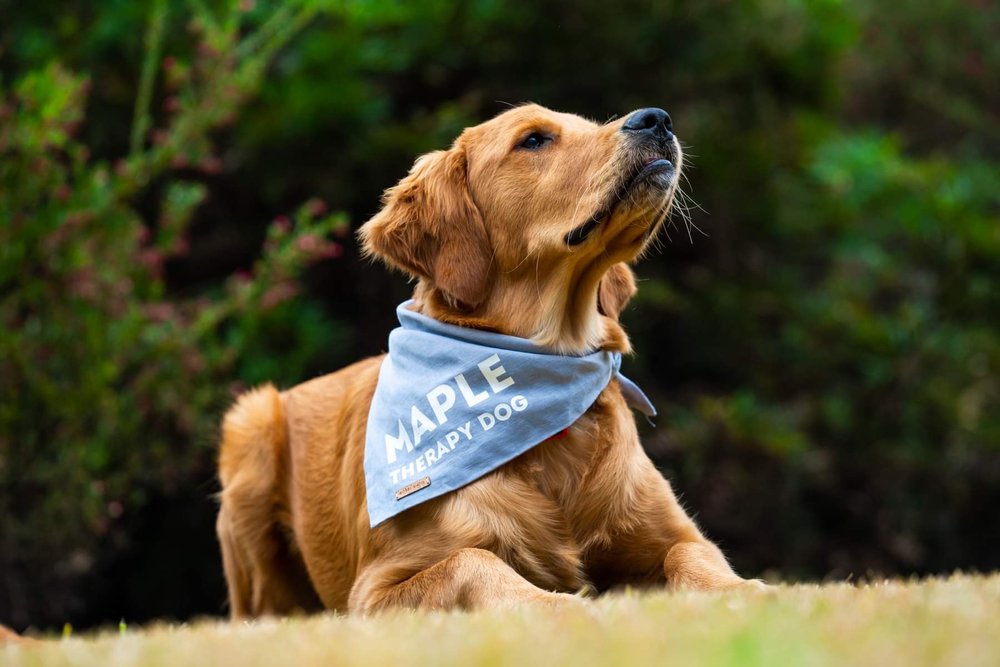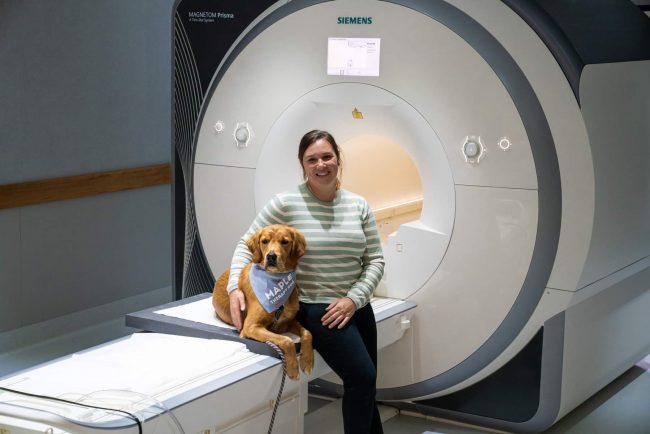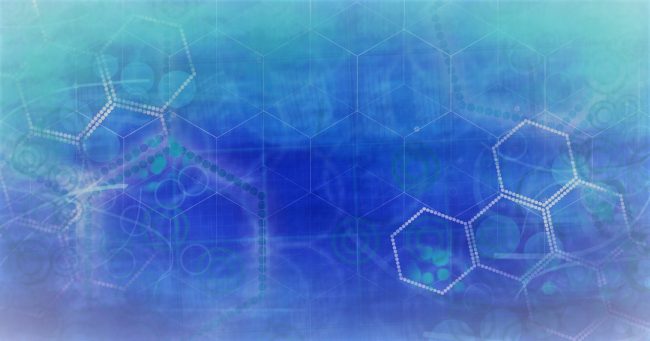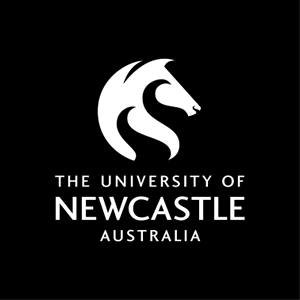23 June: Take Your Dog to Work Day – even if you work at a research institute!
[photo credit: Mick Ross]
How do you reduce stress when you’re preparing people for medical imaging? Simply add a dog. That’s what PhD candidate Caroline Faucher at the Hunter Medical Research Institute (HMRI) has done, training golden retriever Maple to be a calming influence for the young, old and nervous.
Caroline and Maple are part of the Systems Neuroscience Group, under the leadership of Michael Breakspear, NIF’s University of Newcastle Node (UON) Co-Director.
The group brings together mathematicians, neuroscientists, psychologists, clinicians, social scientists and physicists to solve important research and healthcare questions.
Mathematical models, advanced statistics and behavioural sciences are combined with NIF imaging and used to improve understanding in areas such as dementia, mental health, sleep, hearing loss and ageing.
NIF’s MRI technology at Newcastle produces detailed 3D images of soft tissue such as the brain, spinal cord, nerves, muscles, ligaments and tendons.
Caroline uses MRI to study the brain of adults in mid to late life.
“My PhD focuses on the influence of sleep on cognition and brain health through a combination of clinical and neuroscience approaches,” she says.
“Using the MRI means I can study how sleep quality is related to brain activity and structure.”
The research is important in ensuring people can sleep well so their mind and body can recharge – which in turn can help decrease the risk of developing conditions such as dementia, cardiovascular disease and mental health disorders such as depression.
“My research specifically looks at the links between sleep, cognitive abilities, brain structure and activity in older adults, both with and without a genetic risk of developing dementia.”
It aligns with Federal Government priorities for ensuring better health for the young and older Australians, leveraging imaging technology to understand and promote healthy development and ageing.
Being at UON also enables researchers to undertake imaging studies across a representative selection of the Australian population, including people from regional, rural and metro areas – another important national priority.
UON is NIF’s first regional node, providing an opportunity to leverage its unique links to regional, rural and remote communities through the Hunter and New England districts of NSW.

Caroline says participants undergoing MRI scans may be tired or nervous – making Maple’s role as a therapy dog invaluable.
“It’s still early days, but the hope is that Maple can assist participants coming for research. I’m also hoping to research this topic in the near future, looking at how animal-assisted therapy can help with scanner anxiety.
“Of course, Maple also helps with the general wellbeing of the team.
“Positive interactions between people and therapy animals are known to bring emotional and physiological benefits.
“Therapy dogs are increasingly used across Australian hospitals and health clinics, aged care and mental health facilities, schools and workplaces.”
Recent figures show that therapy dogs bring positive interactions to about 20,000 people around the country each week.
Maple also enjoys the interactions.
“My favourite part of my job is getting all of the pats and hearing that I am a good boy.”
Caroline and Maple graduated as an animal-assisted therapy human-canine clinical team from Therapy Dogs Australia.













